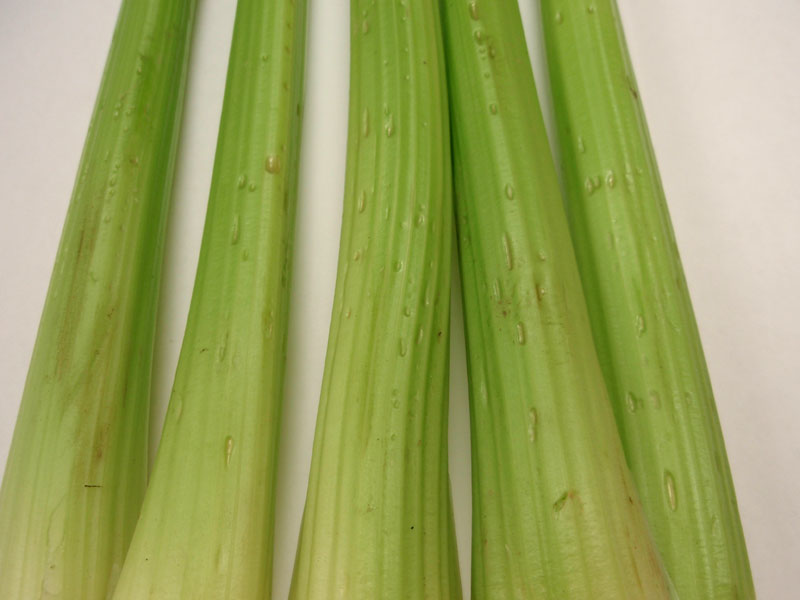Have you seen this defect? In recent contact with the Cornell University Plant Disease Diagnostic Clinic, they said, “Without testing, it is not a conclusive diagnosis, but we have seen similar sunken lesions on celery infected with Cucumber Mosaic Virus. ”

I appreciate their opinion, with only having a picture to look at, it is impossible to be 100% certain. I think it safe for us to not name the defect, but to describe the defect when spotted. “Numerous sunken areas” or “Numerous sunken discolored areas” would be the proper way to describe this defect. The scoring guideline is- “Score as damage when more than one square inch is affected on any branch or branches, score as serious damage when more that 3 square inches is affected on any branch or branches.”
And because no one is certain this defect is being caused by the Quality Defect, Celery Mosaic, describing the defect, as a Condition Defect is what the majority of inspectors across the country are doing. It appears the sunken areas will become more sunken, darker in color……in other words, a progressive defect.

4 Comments on “Celery- Mosaic Virus”
I would diffently call that numerous sunken discolored areas. And I would take one back to the office and see what happens.
I would definitely go with a condition defect, just describing the defect!!! It may be derived from a previous disorder or disease but calling it a quality defect is not correct. Thanks for the chance to discuss this.
I received an e-mail from a Supervisor who wrote,
“I would definitely score it as a condition defect, ” Sunken Discolored Areas” and then of course describe color, area affected etc. I would still call it condition though.”
It does appear all inspectors/supervisors are reluctant to call this a quality defect. According to the USDA Inspection Instructons, if you call the defect “Celery Mosaic” then it would be classified as a Quality Defect….meaning you would ignore it, or not score this defect if performing a “Condition Only” inspection. Describing the defect and reporting the defect as a Condition Defect seems to be the logical thing to do.
Another reader sent me an e-mail, stating:
“Without more history a diagnosis by photo is rarely a good idea and common symptoms may often have very different causal agents. I have seen lesions on celery that look just like this from excessive doses of hypochlorite following hydrocooling.
Hard to say and hopefully it was a limited event.”